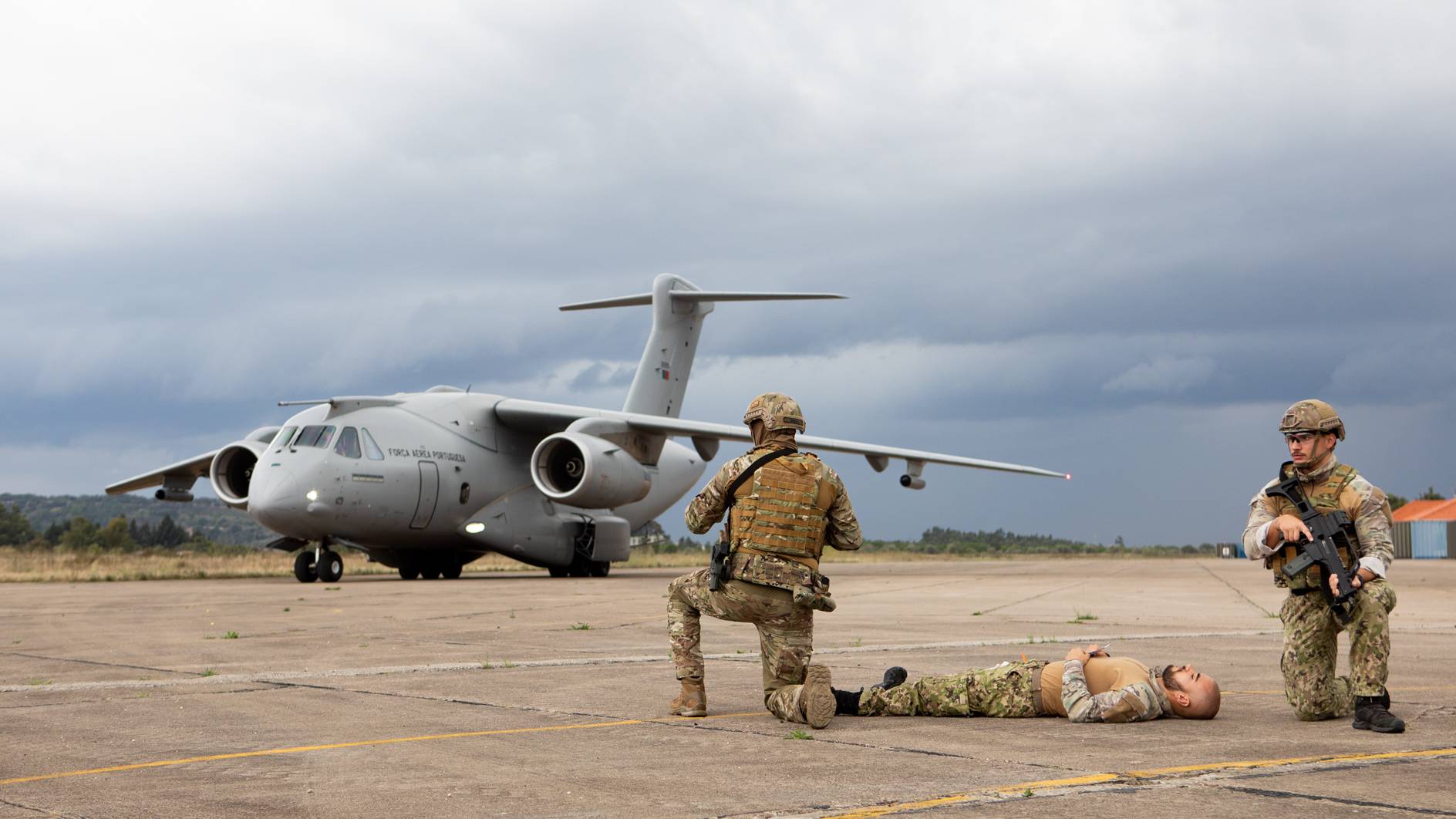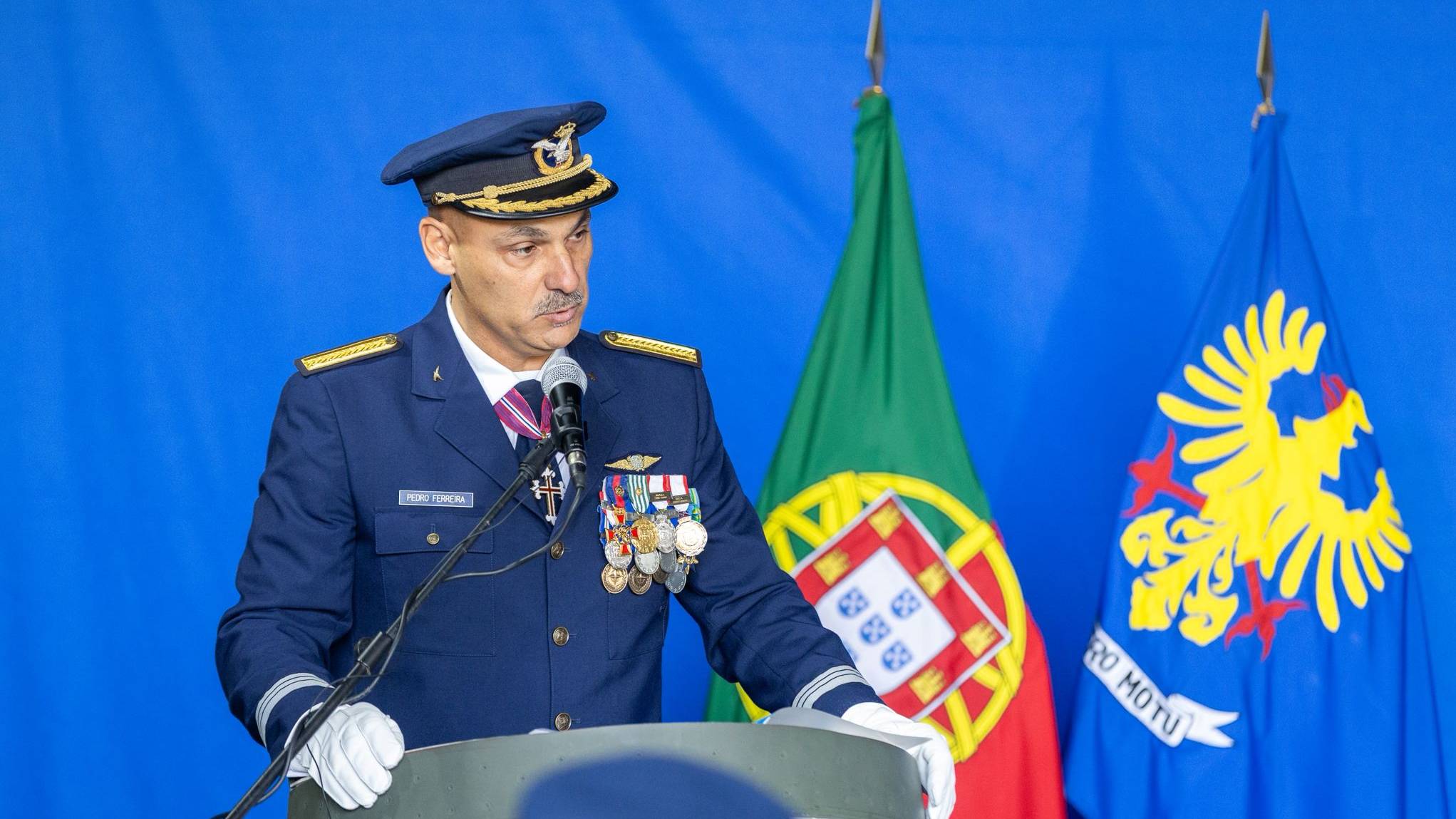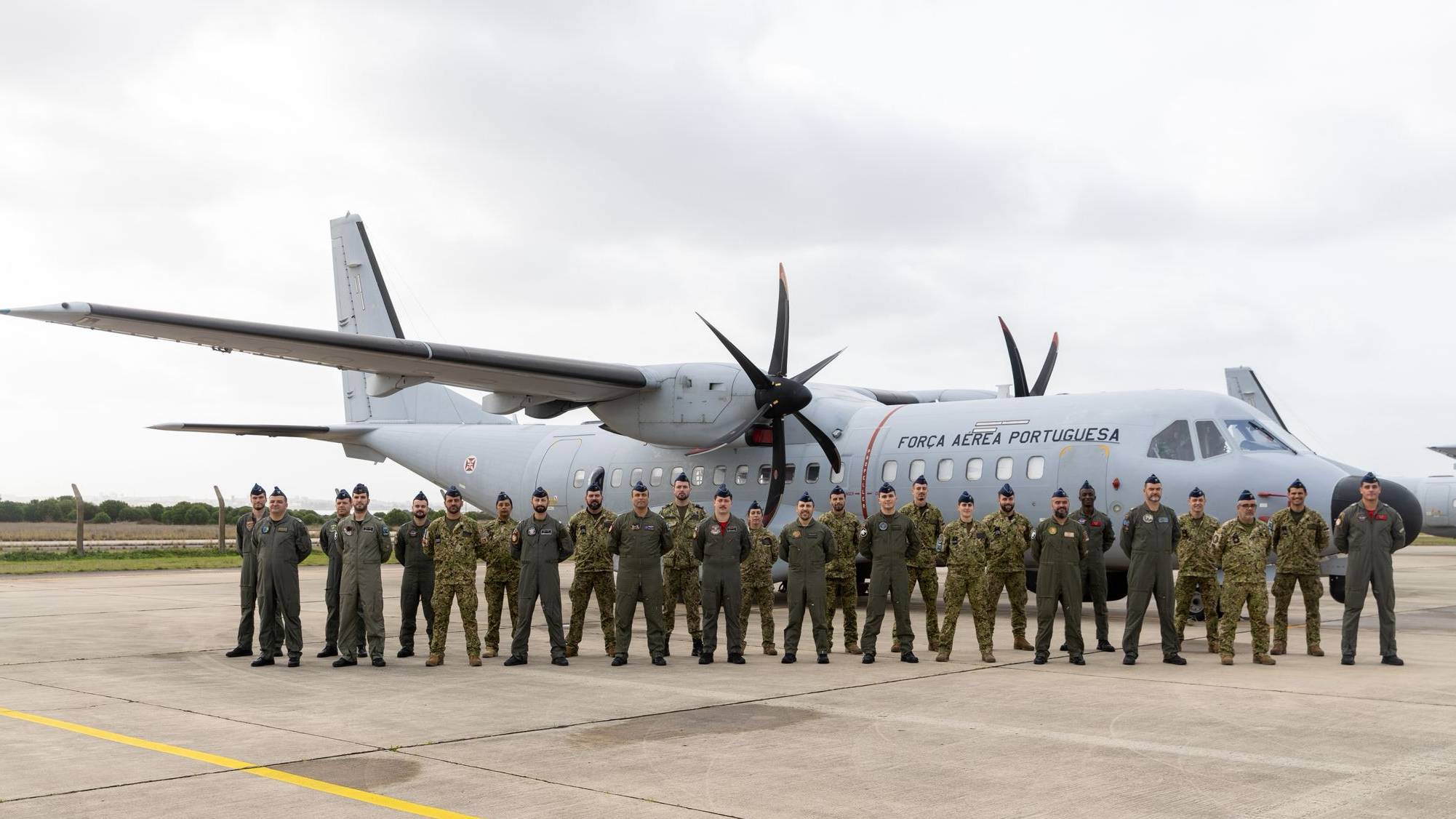
During yesterday, 28 October, several Casualty Evacuation (CASEVAC) training missions took place at the Portuguese Army’s Paratrooper Regiment in Tancos, as part of the European Tactical Airlift Programme Course (ETAP-C), currently being held at Air Base No. 11 (BA11), in Beja.
Five of the seven transport aircraft participating in ETAP-C — representing six different nations — took part in this training exercise. The participating assets included a KC-390, a CN235, a C-130J, and two A-400M aircraft. The aim of the training was to enhance Techniques, Tactics and Procedures (TTPs) and to ensure the maintenance of the certification required for this type of mission.
The Portuguese Air Force KC-390 departed from BA11 to the Portuguese Army Paratrooper Regiment in Tancos to conduct the extraction and transport of a casualty in need of urgent medical care.
The mission involved operating in a contested environment, which increased the level of difficulty of the operation. Its objective was to test response capability and to refine the procedures to be adopted in real-life situations of this nature.
Upon arrival in Tancos, Squadron 506 – “Rinocerontes” – supported by the AMPL, responsible for securing the aircraft perimeter, carried out the extraction of the casualty and their transfer to the interior of the aircraft. The AMPL personnel ensured that the entire operation was conducted under the highest possible safety standards.
CASEVAC missions are a means of transporting injured military personnel or civilians from the location of injury to medical facilities as soon as possible. These missions are conducted in situations of extreme urgency, typically when a life is at risk, and they employ the assets closest to the incident, regardless of their medical configuration.
Aircraft used in CASEVAC missions are not always specifically designed for this purpose and usually carry only limited medical equipment. Therefore, the primary goal is to ensure that the patient reaches a medical facility in the shortest possible time, avoiding unnecessary delays while waiting for specialised medical transport.
Unlike a Medical Evacuation (MEDEVAC), a CASEVAC usually covers shorter distances, requires very limited planning time, and demands an immediate and coordinated response between activation and the transportation of the casualty.








